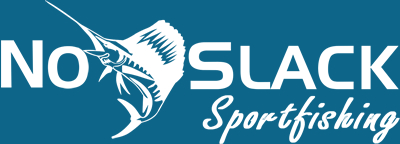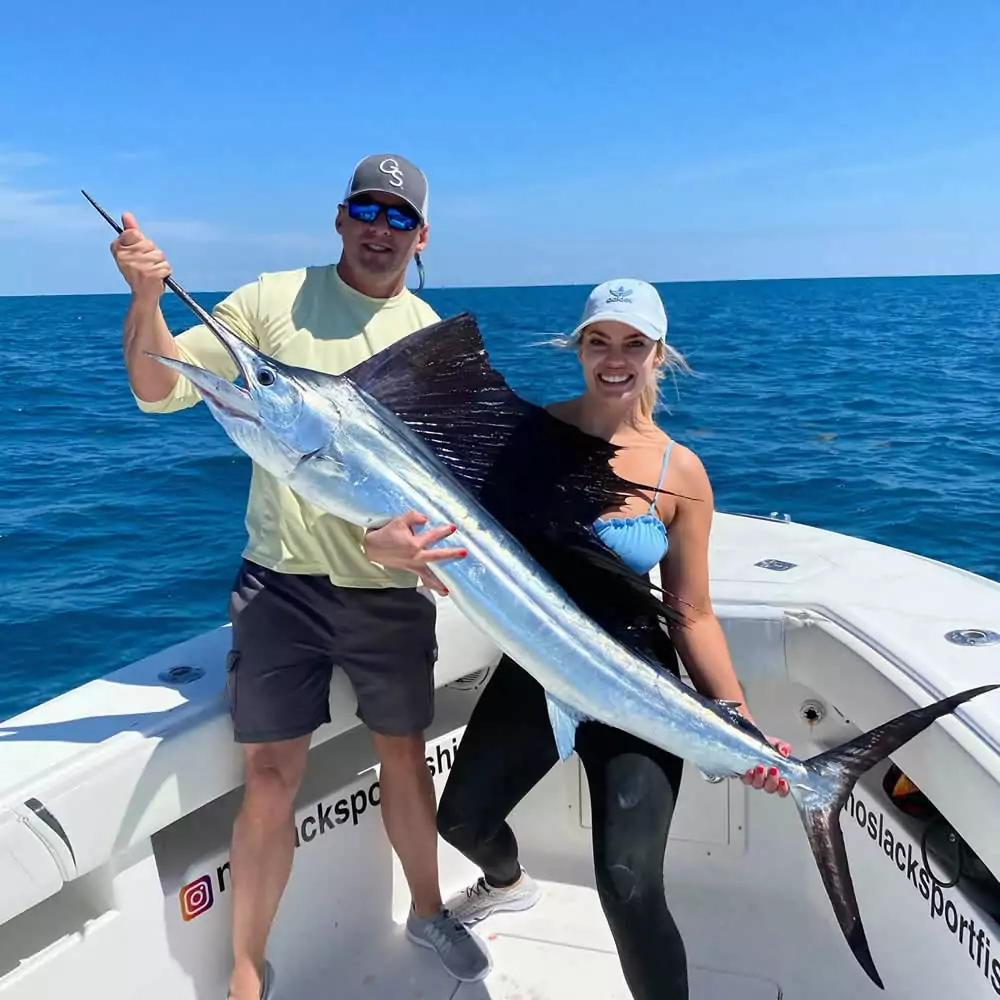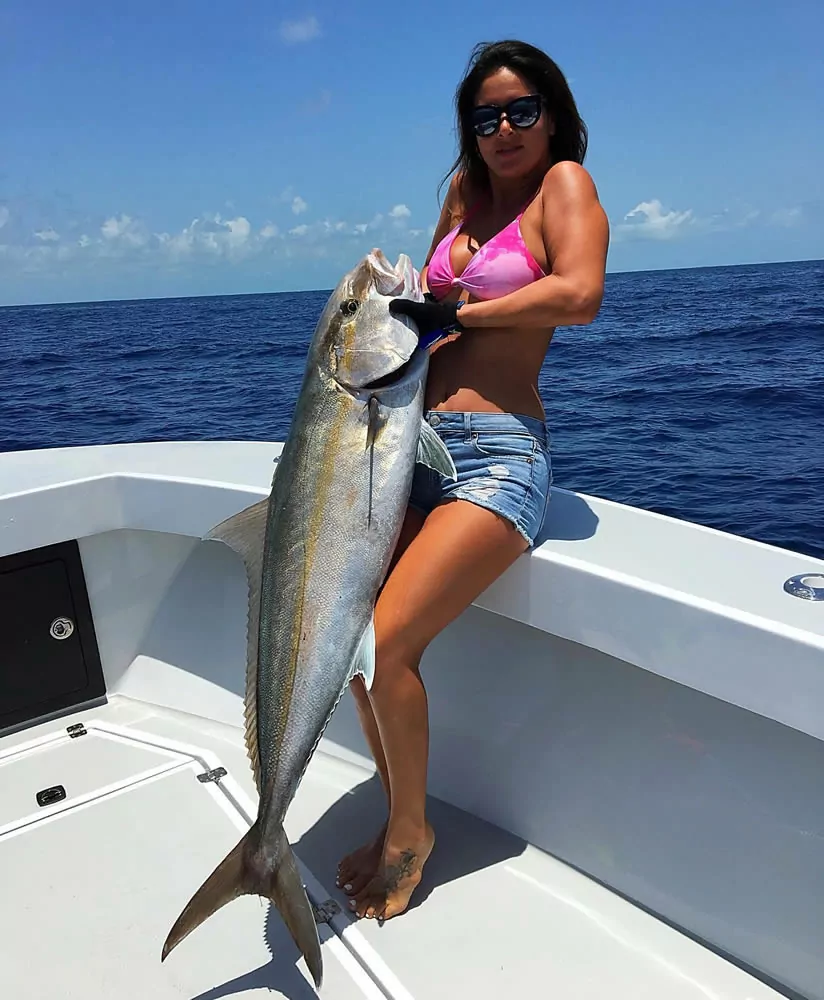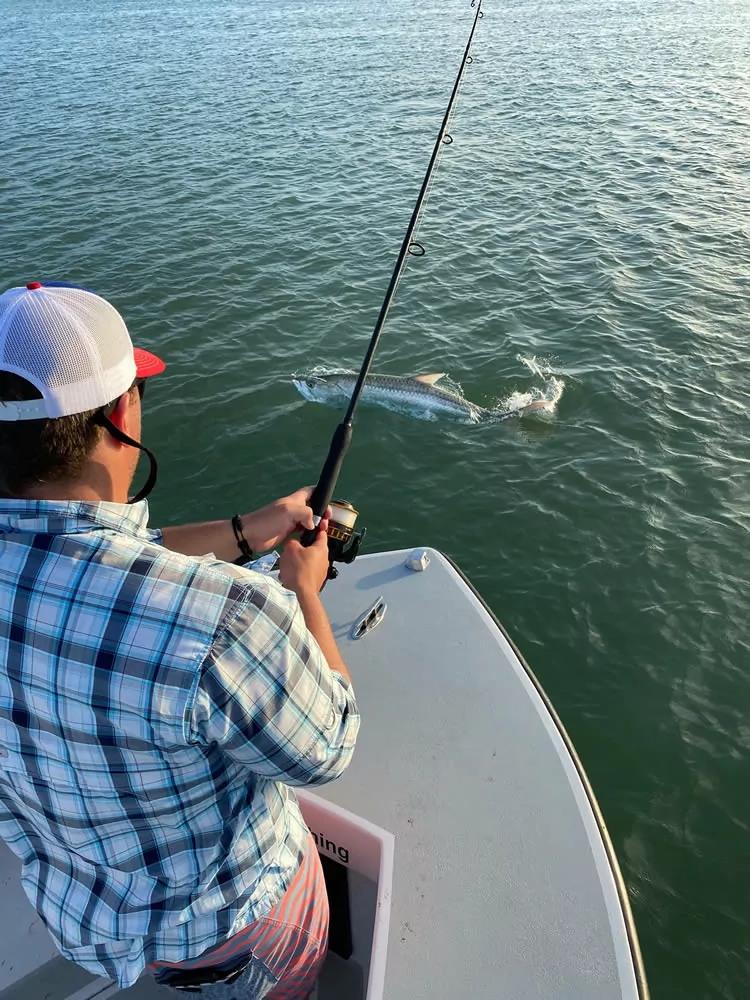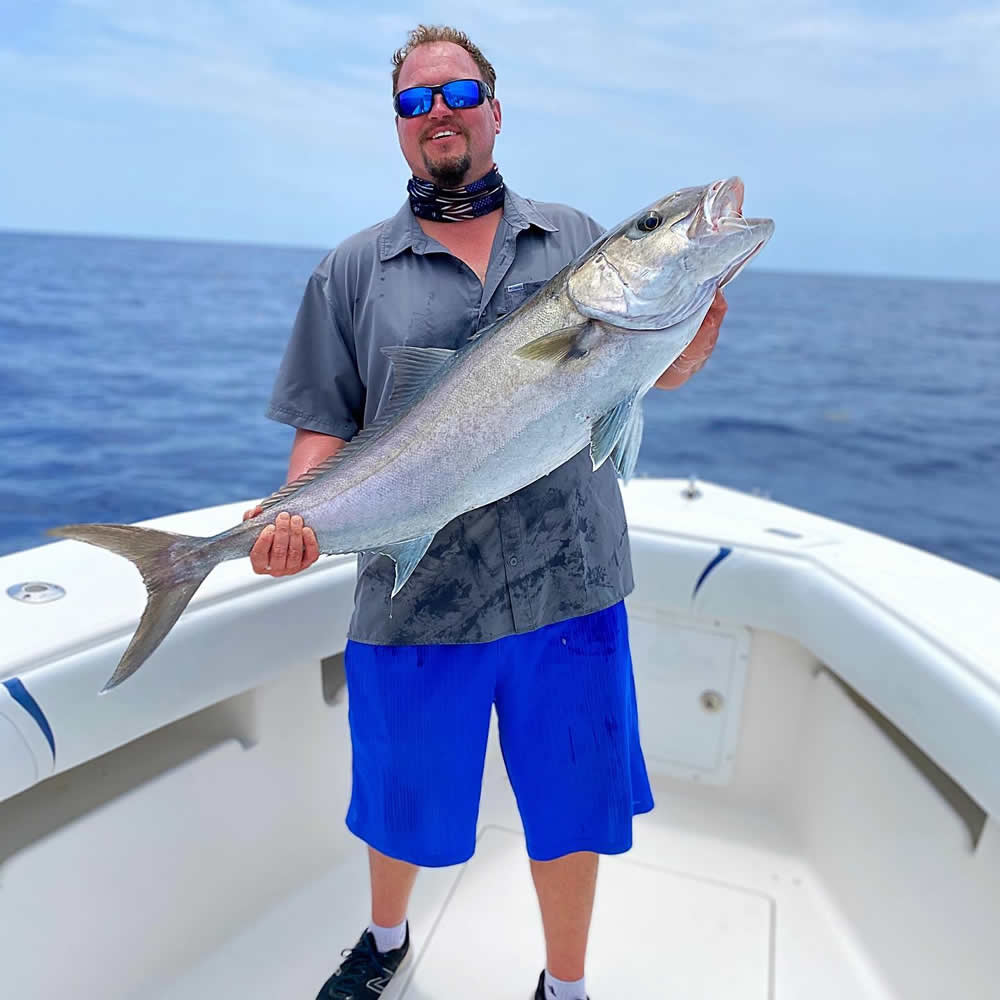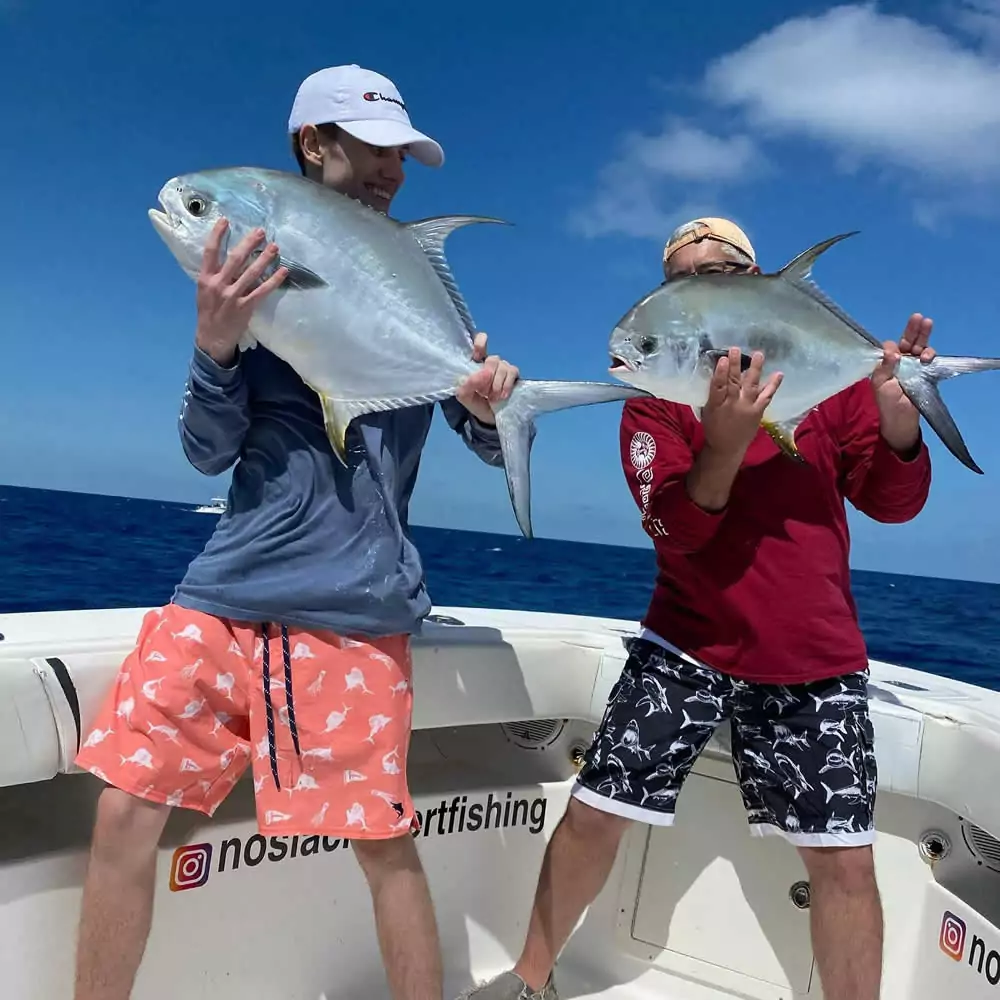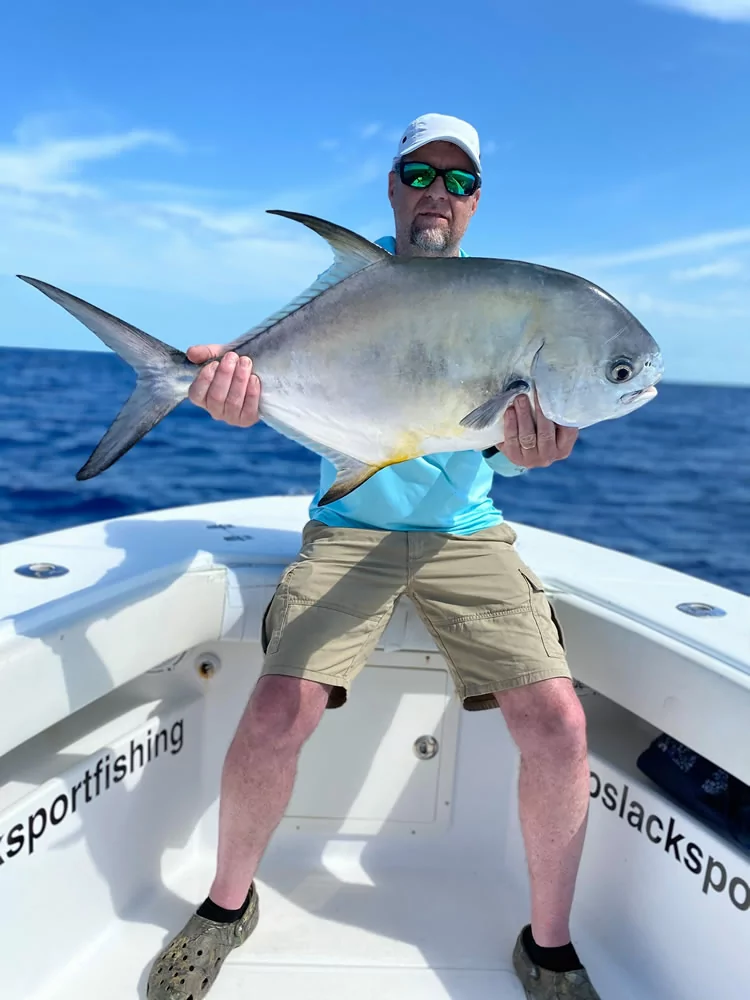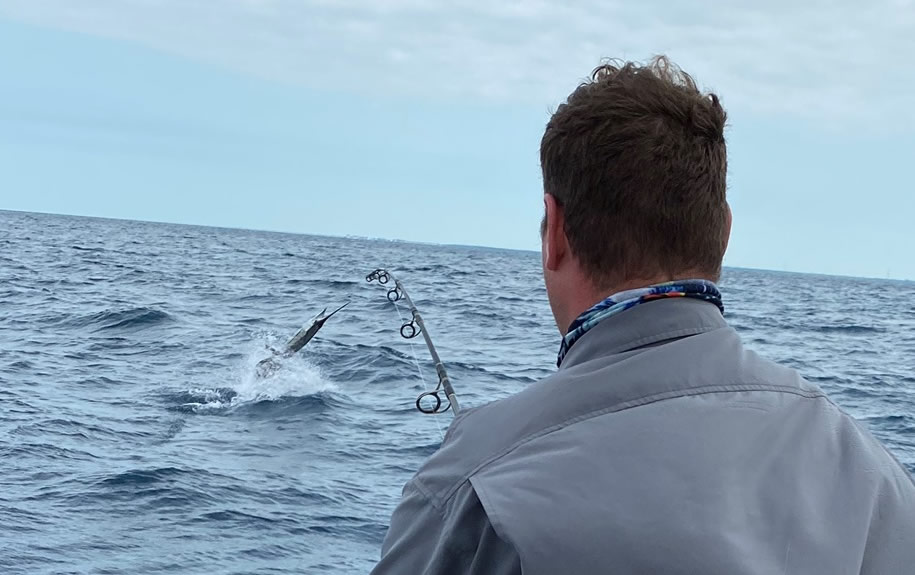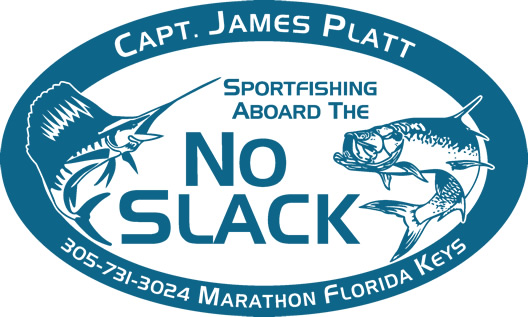Trip Types
There is a wide variety of fishing styles our Captains can deploy at any given moment. Below are the primary types of fishing trips that we offer. It is always best to talk to your Captain the day of your trip and see what he recommends based on his recent fishing trips and the conditions of the day.
In the Florida Keys not only does the time of year impact what you should be fishing for, but also the wind, current, and overall weather for the day of your trip. Multiple types of fishing can be done on one trip, and as always, the longer the trip you book the better, as it gives your Captain more time to find fish and deploy different methods.
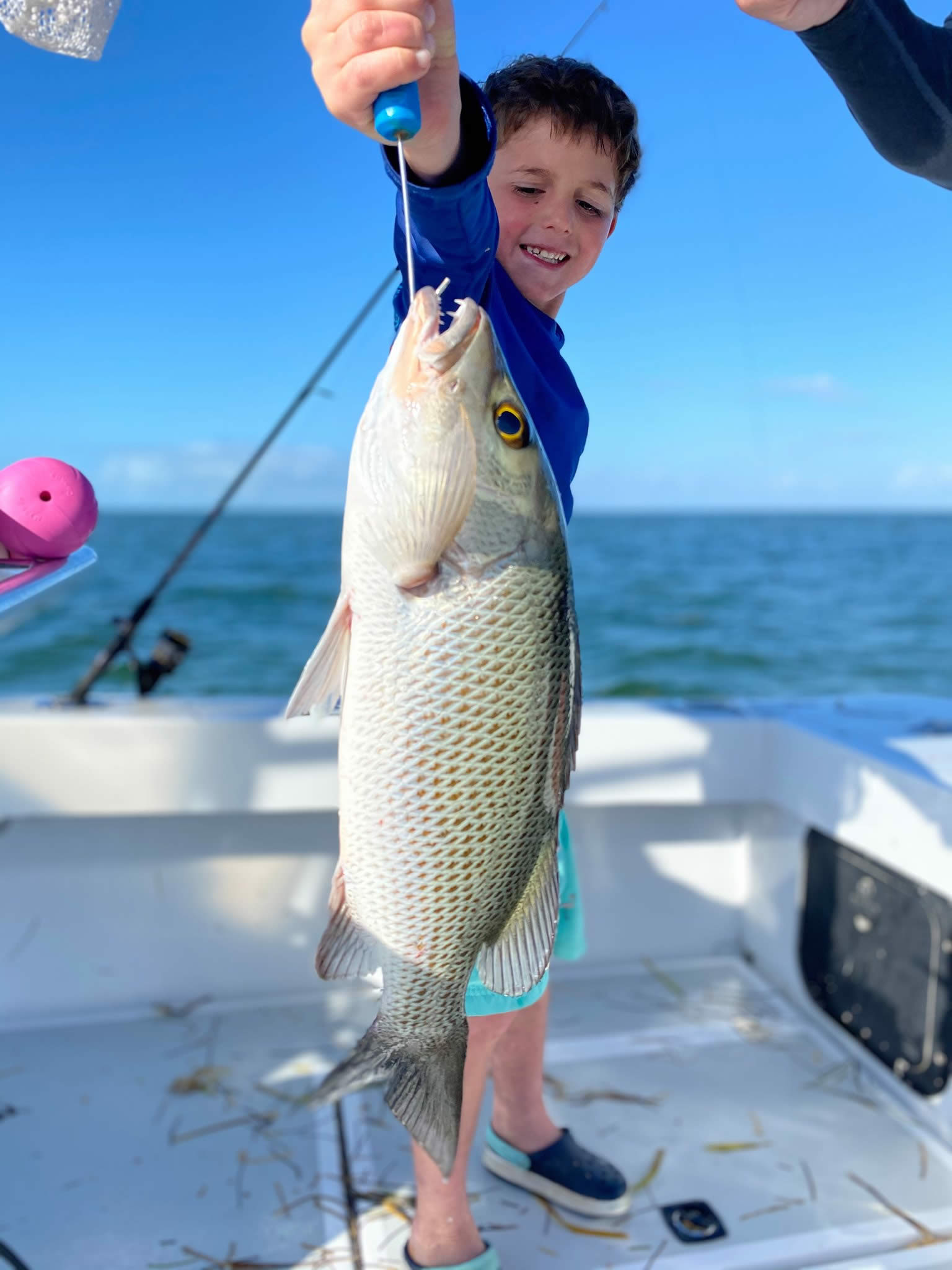
Reef Fishing
Reef fishing often means being anchored on the Reef, chum in the water, drifting lines back for Yellowtail Snapper. It may also mean fishing the bottom for Mangrove Snapper, Mutton Snapper, Grouper, Shark or anything else that wants to have a bite. On the right day you might even find your Captain cruising around the reef with you looking for Sailfish or Cobia in the shallows.
Fishing Kites may be deployed on Reef trips when the wind is right and your Captain believes there to be Sailfish, Mahi, or Tuna in the area as well. It is not uncommon to deploy Kites while reef fishing in the wintertime when there are different types of Mackerel such as Kingfish, Cero, or Spanish around. Reef fishing is a great family activity that doesn’t require a lot of travel time and can get you to the fish relatively fast.
Typical Targets
Yellowtail
Mangrove
Grouper
Mackerel
Barracuda

Reef Fishing
Reef fishing often means being anchored on the Reef, chum in the water, drifting lines back for Yellowtail Snapper. It may also mean fishing the bottom for Mangrove Snapper, Mutton Snapper, Grouper, Shark or anything else that wants to have a bite. On the right day you might even find your Captain cruising around the reef with you looking for Sailfish or Cobia in the shallows.
Fishing Kites may be deployed on Reef trips when the wind is right and your Captain believes there to be Sailfish, Mahi, or Tuna in the area as well. It is not uncommon to deploy Kites while reef fishing in the wintertime when there are different types of Mackerel such as Kingfish, Cero, or Spanish around. Reef fishing is a great family activity that doesn’t require a lot of travel time and can get you to the fish relatively fast.
Typical Targets
Yellowtail
Mangrove
Grouper
Mackerel
Barracuda
Offshore Fishing
Offshore fishing typically means hunting for Pelagic fish that are on the move throughout the water column. This could mean sight fishing, kite fishing, or trolling for Mahi, Sailfish, Tuna, Wahoo and more.
Offshore usually means you are off anchor, motors running, looking for fish. This might include heading far from land looking for floaters, birds, and weed lines. It could also mean fishing on or near the Marathon hump, an underwater mountain located roughly 30 miles south of Marathon that is often teeming with Tuna and sometimes Mahi or Billfish.
Deep Sea Bottom fishing entails drifting baits in deep water with an electric reel when the water is calm and the current is right. Deep-Dropping can result in catching Queen Snapper, Tilefish, Snowy Grouper, and even Swordfish.

Typical Targets
Dolphin Fish (Mahi Mahi)
Tuna
Sailfish
Wahoo
Cobia

Offshore Fishing
Offshore fishing typically means hunting for Pelagic fish that are on the move throughout the water column. This could mean sight fishing, kite fishing, or trolling for Mahi, Sailfish, Tuna, Wahoo and more.
Offshore usually means you are off anchor, motors running, looking for fish. This might include heading far from land looking for floaters, birds, and weed lines. It could also mean fishing on or near the Marathon hump, an underwater mountain located roughly 30 miles south of Marathon that is often teeming with Tuna and sometimes Mahi or Billfish.
Deep Sea Bottom fishing entails drifting baits in deep water with an electric reel when the water is calm and the current is right. Deep-Dropping can result in catching Queen Snapper, Tilefish, Snowy Grouper, and even Swordfish.
Typical Targets
Dolphin Fish (Mahi Mahi)
Tuna
Sailfish
Wahoo
Cobia
Tarpon Fishing
Tarpon fishing is best in the morning or evening Starting in February throughout the summer.
During this time of year in the Keys we often hook these prehistoric looking beasts at weighs between 100-150lbs or more.
Fighting a huge Tarpon is an adrenaline-pumping experience as they run at speeds of up to 35 MPH often followed by awesome acrobatic jumps.
There are several bridges in the area that large Tarpon like to use strong moving currents and the shadows of the bridge pylons to ambush bait usually in the morning and evening. We simulate this scenario with a variety of baits specific to what the Tarpon eat under that bridge.
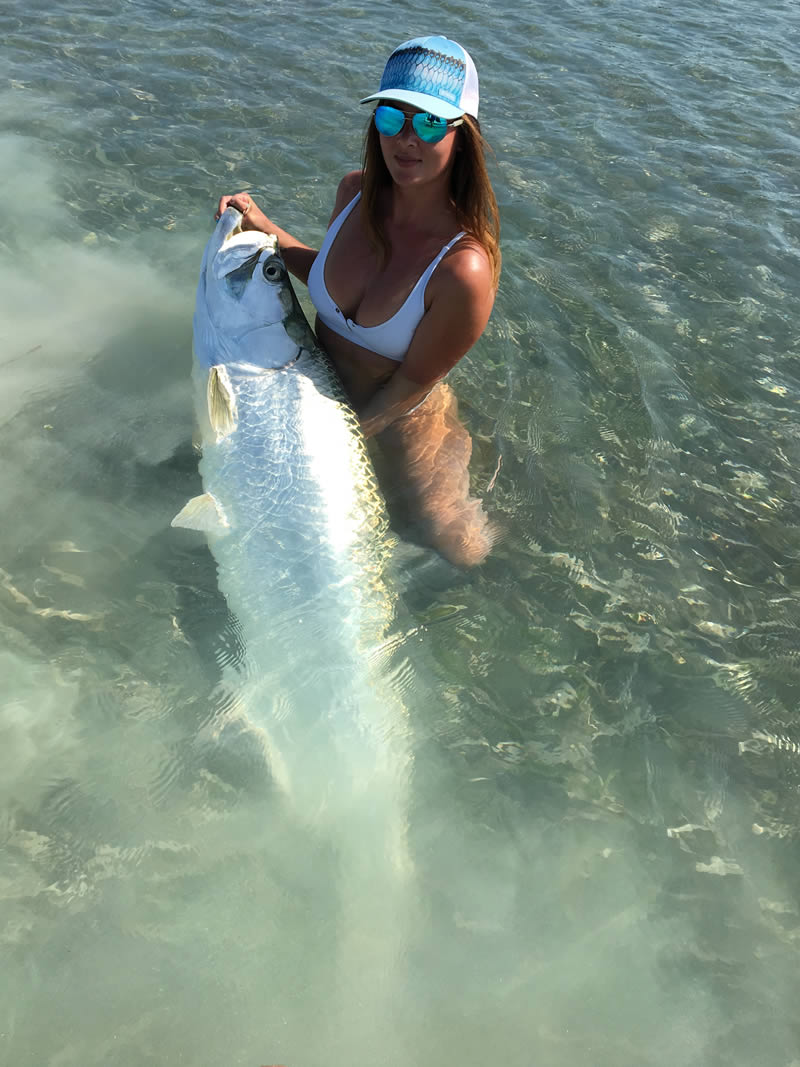
Typical Targets
Tarpon
Blacktip Shark
Bull Shark
Grouper

Tarpon Fishing
Tarpon fishing is best in the morning or evening Starting in February throughout the summer.
During this time of year in the Keys we often hook these prehistoric looking beasts at weighs between 100-150lbs or more.
Fighting a huge Tarpon is an adrenaline-pumping experience as they run at speeds of up to 35 MPH often followed by awesome acrobatic jumps.
There are several bridges in the area that large Tarpon like to use strong moving currents and the shadows of the bridge pylons to ambush bait usually in the morning and evening. We simulate this scenario with a variety of baits specific to what the Tarpon eat under that bridge.
Typical Targets
Tarpon
Blacktip Shark
Bull Shark
Grouper
Wreck Fishing
Wreck fishing is a great way to get on some big fish quickly in the Florida Keys. Just past the reef in the sandy bottom lay sunken boats, ships, airplanes and bridge rubble.
These artificial reefs are home to many fish and often patrolled by large predators. Drifting baits on or near these wrecks can yield some excellent big fish action.
Wreck fishing is best done when there is some current, but not too much since the baits need to be drifted by the wreck at an optimal speed. Sometimes the Wrecks can be surrounded by sharks which means wind fast or end up with just a fish head!
Arm busting amberjacks over 100lbs and delicious tasty Mutton Snappers over 20lbs are the most common catches on the wrecks in the Atlantic side. A variety of large Grouper can be caught on the wrecks as well as smaller Vermillion Snapper. Springtime adds large African Pompano 30-50lbs and large Permit on the wrecks when they are spawning.
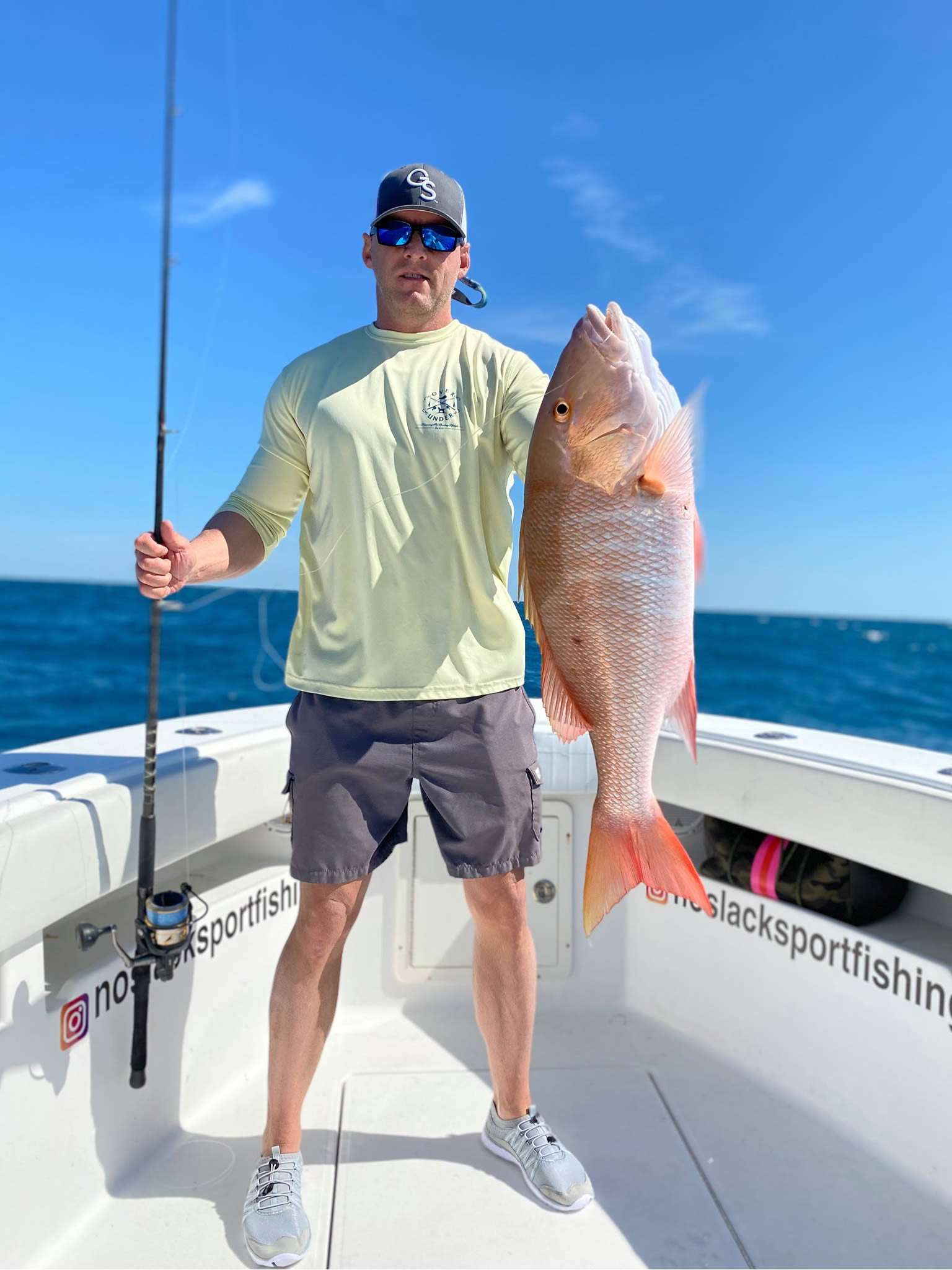
Typical Targets
Amberjack
Mutton Snapper
Black Grouper
African Pompano
Permit

Wreck Fishing
Wreck fishing is a great way to get on some big fish quickly in the Florida Keys. Just past the reef in the sandy bottom lay sunken boats, ships, airplanes and bridge rubble.
These artificial reefs are home to many fish and often patrolled by large predators. Drifting baits on or near these wrecks can yield some excellent big fish action.
Wreck fishing is best done when there is some current, but not too much since the baits need to be drifted by the wreck at an optimal speed. Sometimes the Wrecks can be surrounded by sharks which means wind fast or end up with just a fish head!
Arm busting amberjacks over 100lbs and delicious tasty Mutton Snappers over 20lbs are the most common catches on the wrecks in the Atlantic side. A variety of large Grouper can be caught on the wrecks as well as smaller Vermillion Snapper. Springtime adds large African Pompano 30-50lbs and large Permit on the wrecks when they are spawning.
Typical Targets
Amberjack
Mutton Snapper
Black Grouper
African Pompano
Permit
“I’m a 35 year resident and business owner in Marathon, FL. No Slack Sportfishing is one of the best fishing operations you will find anywhere in the world! Captains are extremely knowledgeable, friendly and patient. I have fished with them for many years and NEVER have been disappointed!”
Jonathon Murphy
Marathon, FL
